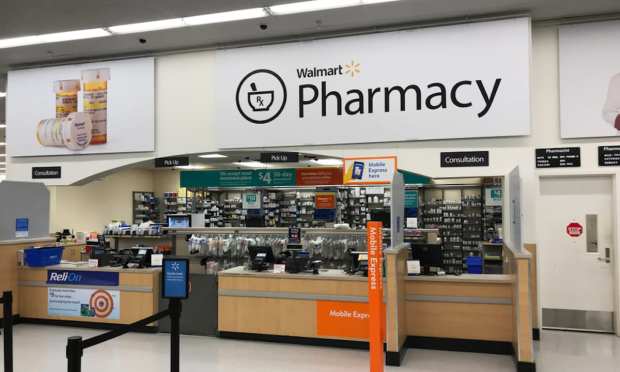Whole Paycheck Tracker: Amazon, Walmart Play Different Roles In Vaccine Distribution

After a year in which both Walmart and Amazon prospered in their share of the digital-first economy, the two retailers who lay claim to the U.S. consumer’s whole paycheck are setting themselves up to give back. That effort will take the form of COVID-19 vaccine distribution. Walmart’s role is right up front; Amazon’s is more behind the scenes.
According to a corporate statement, Walmart will leverage its pharmacists who have been trained to administer flu shots and other vaccines. It is preparing its 5,000+ Walmart and Sam’s Club pharmacies to receive the vaccine doses, which means there will be freezers and dry ice in all pharmacies to handle requirements for storing the vaccine.
The company is also preparing to move away from its in-store preparations, entering into agreements with state governments to support vaccinations where needed, even in long-term care facilities. Communications will also be part of the plan, informing consumers as to when they need to receive first or in some cases second doses of the vaccine.
Dr. Tom Van Gilder, chief medical officer of Walmart, also made a statement in support of the vaccine effort, pointing out that 90 percent of the American population lives within 10 miles of a Walmart and highlighting the company’s operational strength.
“This year has shown us all how important our relationships are across the country and within our communities, and how much our communities depend on our availability, service and support,” Van Gilder said. “Our stores have adapted, strengthening online and delivery options and providing our customers with more choices on how to manage their lives. We have been doing the same thing in our pharmacy operations, offering curbside and delivery options, and now getting ready for the COVID-19 vaccine once it is approved. Walmart and Sam’s Club stand with our communities.”
Amazon has been quiet about its role in vaccine distribution, but an October announcement could indicate the role it will play, especially after the holiday rush is over. At that time, the company announced a multi-year agreement to co-develop Carrier’s new Lynx digital platform via Amazon Web Services. According to Amazon, the “cold chain” suite of tools will provide Carrier with increased connectivity and actionable intelligence to improve outcomes for temperature-sensitive cargo, including food, medicine and vaccines.
According to David Appel, president of refrigeration for Carrier, the combination of its Lynx platform with AWS will improve the efficiency of the “cold chain” supply chain, which will decrease delays and optimize costs. The company said Carrier will use AWS’ machine learning (ML) services to identify potential issues that could impact cargo, as well as to run analytics to develop recommendations for improving performance. “For example, by analyzing historic and real-time performance data from Carrier’s cloud-connected equipment, the Lynx platform could suggest proactive maintenance to maximize a specific piece of equipment’s availability,” noted a statement from Carrier.
Carrier’s refrigerated storage pods “deliver temperature control within +/- 0.25 degrees Celsius and temperatures down to negative 40 degrees Celsius, while their monitoring devices can track temperatures down to dry ice conditions of negative 95 degrees Celsius,” Carrier noted. The company added that the mobility of the pods will make it easy to relocate them to address changing capacity or to set up temporary locations for administering vaccines.
“Carrier and AWS are tackling the complexity and fragmentation of the cold chain to give supply chain customers the transparency, flexibility and insights they require to reduce risk and deliver food, medicine and vaccines when and where they’re needed,” said Sarah Cooper, general manager, IoT Solutions at Amazon Web Services, Inc. “This project, which combines Carrier’s cold chain expertise with AWS’ digital experience and unparalleled portfolio of services, highlights how entire industries stand to benefit from digital transformation through increased efficiency, reduced costs and greater dependability.”
